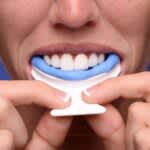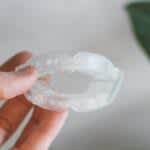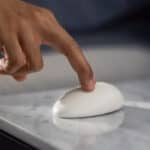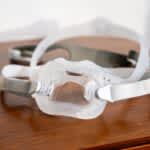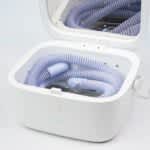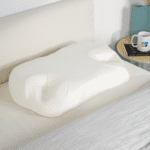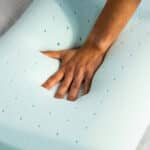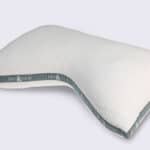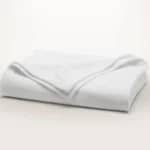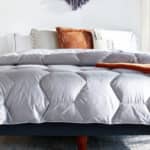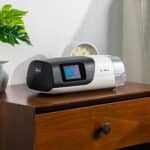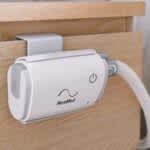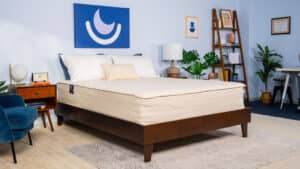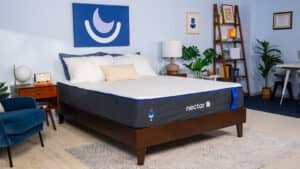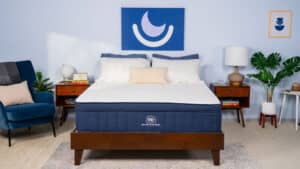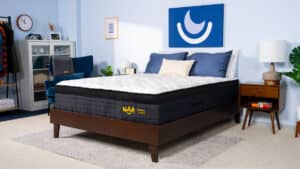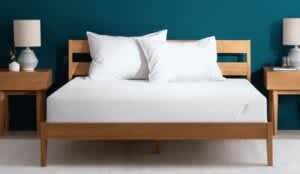The best type of mattress for you depends on several factors, like your body weight and favorite sleeping position. While there are many mattress designs on the market today, each type targets the needs of different sleepers.
We’ll highlight the different types of mattresses you’ll find online and in stores across the country and help you learn how to differentiate between them. We’ll discuss various constructions, along with the pros and cons of each, so that you have the tools to choose the best mattress for your unique needs.
Let Us Help You Find the Perfect Bed
Answer a few questions to find the right mattress for your unique needs
What Are the Best Mattress Types?
Your individual preferences determine what type of mattress will complement your sleep environment. What works well for someone heavier than you will likely feel too firm, while a mattress that suits someone lighter than you may not offer the support you need. Additionally, back, stomach, and side sleepers often favor different firmness levels.
In addition to body weight and sleeping position, consider other features you might prefer in a bed, such as a responsive surface or one that has greater motion isolation. With so many mattress designs available today, it can be an overwhelming process to choose the best one for you. We’ll provide in-depth information about the most popular mattress constructions to help you better understand their feel and performance.
Breakdown of Popular Mattress Types
Mattress Type | Description | Pros | Cons |
|---|---|---|---|
Hybrid designs can vary widely between models, but they generally include a combination of polyfoam, memory foam, latex, wool, microcoils, or fiber comfort layers on top of a pocketed coil support system. |
|
| |
Latex has a gently contouring feel with greater responsiveness than memory foam. Some latex mattresses consist of only latex layers, while others include additional materials. |
|
| |
All-foam mattresses contain multiple layers of foam. The comfort system typically consists of polyfoam, memory foam, or both, with a support core made of high-density polyfoam. |
|
| |
Airbeds have air chambers in the support core that sleepers can inflate or deflate to change the firmness level. They often have additional comfort layers on top of the core. |
|
| |
Innersprings have a traditional mattress construction that uses coils for support. They sometimes incorporate microcoils or pillow-tops made from foam, fiber, or wool. |
|
|
Foam Mattresses
Foam mattresses offer exceptional pressure relief and motion isolation, and they tend to have a lower price-point than latex or hybrid beds. They often incorporate polyfoam, memory foam, or both within their layers. This mattress type typically suits side sleepers or anyone who needs substantial pressure relief.
Foam contours closely to the body, providing a hugging sensation that cushions joints. It also prevents motion from transferring across the mattress surface, which can be an added benefit for couples or co-sleepers. However, foam retains heat and can sleep hotter than other types of mattresses.
Latex Mattresses
Natural latex comes from the sap of rubber trees and gives mattresses a resilient and slightly responsive feel. The material lacks the contouring of memory foam, which makes it a worthwhile pick for sleepers who need pressure relief but don’t like to sink too deeply into the mattress.
Since latex regulates temperature well, sleepers are unlikely to overheat on a model that includes it. This style generally costs more to manufacture than foam mattresses, resulting in higher price-points. While latex mattresses are durable, they can also be heavy, and setup generally requires more than one person.
Hybrid and Innerspring Mattresses
Both hybrid and innerspring mattresses have coil support cores, and some manufacturers use these terms interchangeably. However, they have two distinct designs. On top of the coil core, hybrids often have comfort systems that incorporate foam, fiber, wool, or latex to enhance performance and target different needs. Traditional innerspring mattresses may provide extra cushioning by adding microcoils, pillow-tops, or Euro-tops.
Exact specifications between coil gauges and styles vary by manufacturer, but all hybrids and innersprings share some similar characteristics. Coils in the support core have space between them. This allows air to circulate within the mattress and prevents heat retention. The coils also provide a responsive surface that prevents sleepers from sinking too deeply into the mattress. Hybrid mattresses typically use pocketed coils that are individually wrapped and move independently of one another, resulting in less motion transfer.
Innerspring mattresses often provide robust support, though they can lack cushioning. While this may be advantageous for some back and stomach sleepers, side sleepers may want to consider if an innerspring model is plush enough to prevent pressure points before committing to a purchase.
Airbed Mattresses
Airbeds have an innovative design that allows users to change their bed’s firmness level with the touch of a button. This mattress type has air chambers within the core that inflate or deflate to alter the bed’s feel. The number of chambers varies by manufacturer, with some models including many different chambers in order to give users a highly customizable sleep surface.
Airbed mattresses are versatile and suit a range of sleeper types, particularly couples who prefer different firmness levels. They also suit hot sleepers, as the core retains little to no heat. However, airbeds can carry a much higher price-point than other mattress types. And while they are generally durable, electronic components can break.
Choose a Mattress Based on Your Body Type and Sleep Position
We measure firmness on a 10-point scale, with the softest mattress ranking as a 1 and the firmest as a 10. Most adult sleepers prefer a mattress that falls between 4 and 7. Sleepers under 130 pounds typically favor softer mattresses, while people who weigh over 230 pounds require a mattress with substantial support.
Your favorite sleeping position also plays a role in what firmness level you prefer. We’ll break down the most common sleeping styles, explaining the best mattresses for each one and how preferences vary by weight group.
Side Sleepers
Side sleepers require the most cushioning of all sleeper types. When you sleep on your side, much of your body weight rests in your hips and shoulders. These areas can develop into uncomfortable pressure points if a mattress doesn’t contour to the sleeper.
The best mattress for side sleepers alleviates pressure points while preventing the midsection from sinking into the mattress and the spine from falling out of alignment. Regardless of weight, side sleepers should look for a mattress that offers plenty of contouring to prevent sore hips and shoulders. Latex, foam, and certain hybrid models are well suited to this task.
Under 130 lbs. | 130 to 230 lbs. | Over 230 lbs. |
|---|---|---|
Side sleepers in this weight range don’t weigh enough to compress a firm mattress. Opt for a model with a firmness level between soft (2) and medium soft (4) that offers plenty of cushioning. | Mattresses in the medium soft (4) to medium (5) range offer a balance of support and cushioning, which benefits sleepers in this weight group. | A medium firm (6) to firm (8) mattress provides enough support for side sleepers over 230 pounds, though they should still look for a model that adequately relieves pressure. |
Back Sleepers
Back sleepers benefit from mattresses that combine support and pressure relief. While they tend not to feel the same acute pressure points as side sleepers, they can develop soreness or back pain if they sleep on a mattress that lacks cushioning. The best mattress for back sleepers features a midrange firmness, though this can vary according to weight.
Under 130 lbs. | 130 to 230 lbs. | Over 230 lbs. |
|---|---|---|
A medium soft (4) mattress provides enough support to keep the spine on an even plane while also providing cushioning for lightweight back sleepers. | Back sleepers in this category will receive the most support from a model with moderate contouring that rates between medium (5) and firm (8). | Back sleepers who weigh more than 230 pounds generally need strong support to maintain proper spinal alignment. These sleepers typically fare best with a mattress that registers at least a 7 on the firmness scale. |
Stomach Sleepers
Stomach sleepers need the firmest mattress of all the sleeper types. A mattress that’s too soft can cause the spine to fall out of alignment, resulting in pain or discomfort. The best mattress for stomach sleepers offers slight contouring to soften their sleep surface, though a mattress with too much cushioning can cause stomach sleepers to feel as if they’re sinking into the mattress.
Under 130 lbs. | 130 to 230 lbs. | Over 230 lbs. |
|---|---|---|
A mattress with a medium soft (4) firmness level typically provides adequate support for stomach sleepers who weigh less than 130 pounds. | Firmness levels between medium (5) and firm (8) give stomach sleepers in this category support that encourages spinal alignment. | Stomach sleepers over 230 pounds need stronger support than any other group. Anything softer than a firm (7) model will likely result in discomfort. A firm mattress with minimal contouring keeps sleepers properly supported on top of the mattress. |
Combination Sleepers
Finding the right model for combination sleepers can be tricky, as they need to consider multiple sleeping positions. Sleepers within this group should look for a model with a firmness level that’s appropriate for each sleeping position within their weight range.
Under 130 lbs. | 130 to 230 lbs. | Over 230 lbs. |
|---|---|---|
Look for a mattress between soft (3) and medium soft (4). The ideal model will have enough contouring to relieve pressure point discomfort for back and side sleepers. | A model between medium soft (4) and medium firm (6) with moderate contouring offers a blend of support and cushioning appropriate for this weight range. | Firm mattresses with ratings of 7 or 8 have enough support to maintain spinal alignment in various sleeping positions. Those who spend more time on their sides may want to consider a model with greater contouring to avoid pressure points. |
How Do You Choose a Mattress for Body Pain?
For sleepers who wake up in pain, switching to a mattress designed for your body type and sleeping position can help relieve discomfort. To determine the best mattress for body pain, consider the area that needs more support, as well as your weight and sleeper type.
Sleepers who experience arthritis, back pain, or joint pain can find comfort from a mattress that both supports and cushions. A mattress with strong support will keep your spine on an even plane, preventing it from sinking too deeply into the mattress.
Additionally, a supportive mattress that cradles your joints can prevent pressure points and morning aches. Opt for a model appropriate for your weight and sleeper type that incorporates memory foam, latex, or another pressure-relieving material.
If you experience frequent pain, consult your doctor or a medical health professional to ensure your mattress addresses your needs.
What if You’re Choosing a Kid’s Mattress?
Since mattresses typically last 6 to 8 years, consider purchasing a model that can accommodate your child’s needs as they grow. For example, a twin XL has the same length as queen and king models but has a lower price-point. This allows plenty of room for most kids to grow.
Picking a firmness level may be tough, especially if you’re buying a mattress for kids online. You can always add a mattress topper to change a bed’s feel and extend its lifespan. However, many online retailers offer sleep trials that allow you to return a mattress if it doesn’t suit your child’s needs.
What About for an Infant?
While infant and crib mattresses incorporate multiple materials, they usually have a simple construction. To keep babies safely supported on top of the mattress, infant mattresses often have a firm feel. Some models are flippable, with one side designed for infants and the other for toddlers.
When shopping for a crib mattress, look for safety and material certifications that ensure the sleep surface is appropriate for an infant. Consider products that carry certifications from OEKO-TEX, CertiPUR-US, the Global Organic Textile Standard (GOTS), or the Consumer Product Safety Commission (CPSC).
Babies can be messy, and many crib mattresses address this. Waterproof infant mattresses and removable waterproof protectors make the beds easy to clean.
Are Pillow-Tops and Waterbeds a Good Option?
Innerspring mattresses often include a pillow-top to cushion and soften the mattress’ surface. Without one, sleepers may feel uncomfortable sleeping directly on the coils.
Pillow-Top Mattresses
Pros
- Gives a mattress extra cushioning
- Helps absorb motion and limits disturbances across the bed
- Can include memory foam, latex, or other pressure-relieving materials
Cons
- May increase a model’s price-point
- Plush surface can sag over time
- Increases a mattress’ height, which may necessitate deep pocket sheets
While waterbeds aren’t as popular as they were during their heyday in the 1980s, you can still find a comfortable and supportive model in today’s mattress market. Instead of one single chamber, modern waterbeds typically feature multiple chambers and baffles that help prevent leaks and increase durability.
Waterbeds
Pros
- Some models allow users to control the water’s temperature
- Relieves pressure points effectively
- Easy to clean
Cons
- Not permitted by some leases or apartment buildings
- Transfers motion easily
- Can develop leaks
- May increase energy costs
Ask the Sleep Doctor
Have questions about sleep? Submit them here! We use your questions to help us decide topics for articles, videos, and newsletters. We try to answer as many questions as possible. You can also send us an email. Please note, we cannot provide specific medical advice, and always recommend you contact your doctor for any medical matters.



